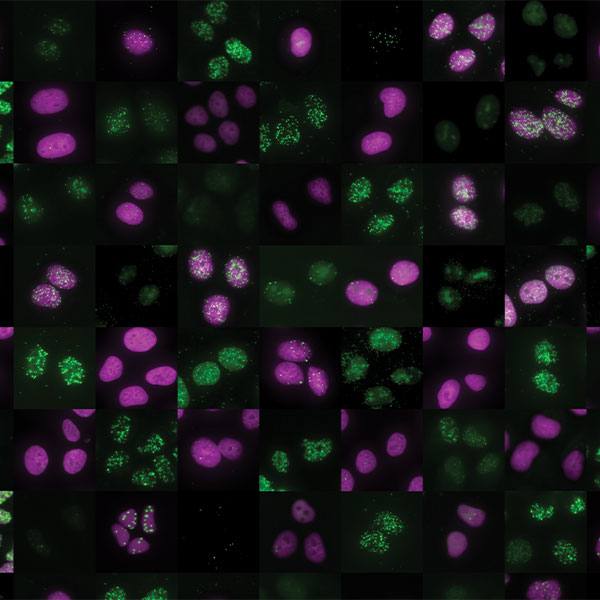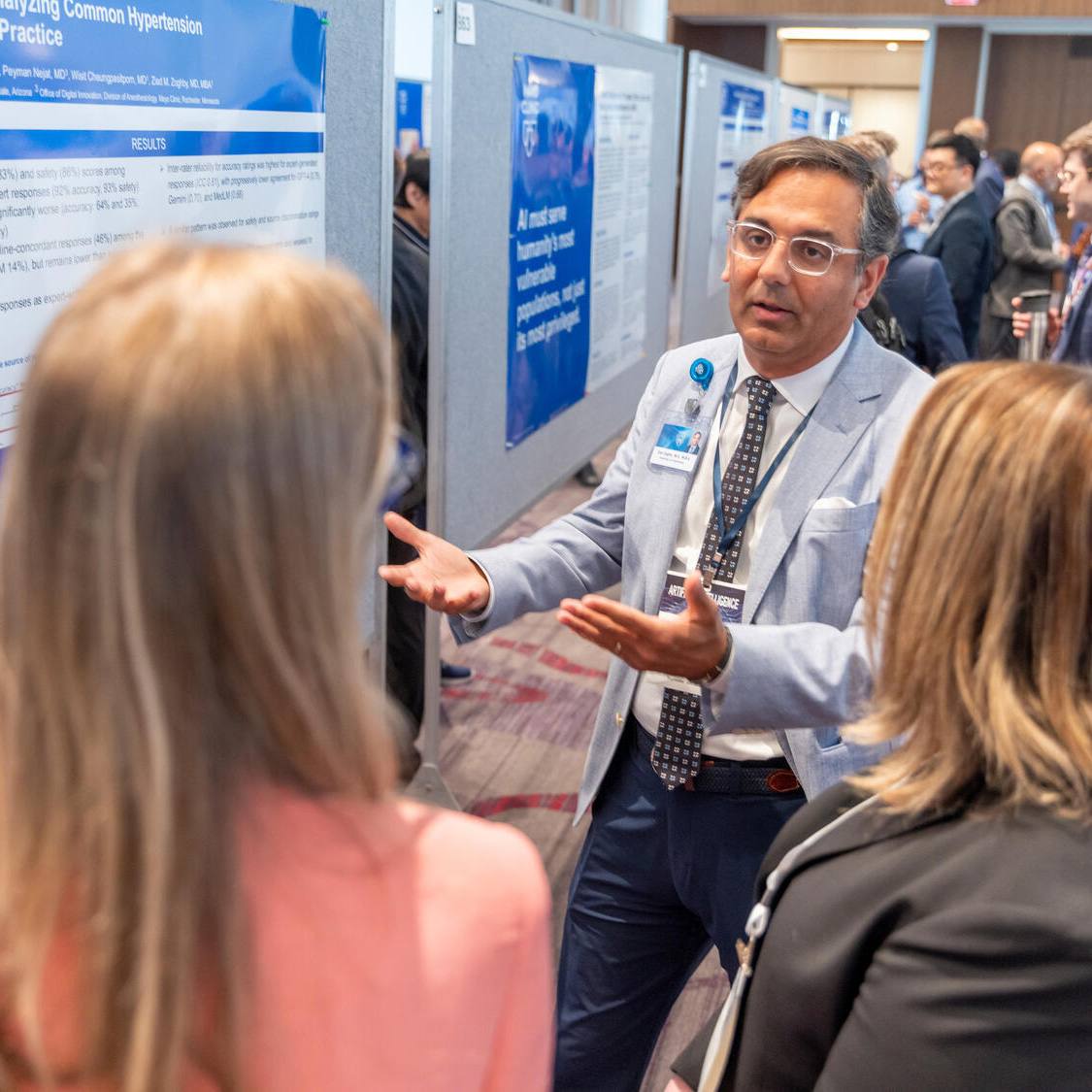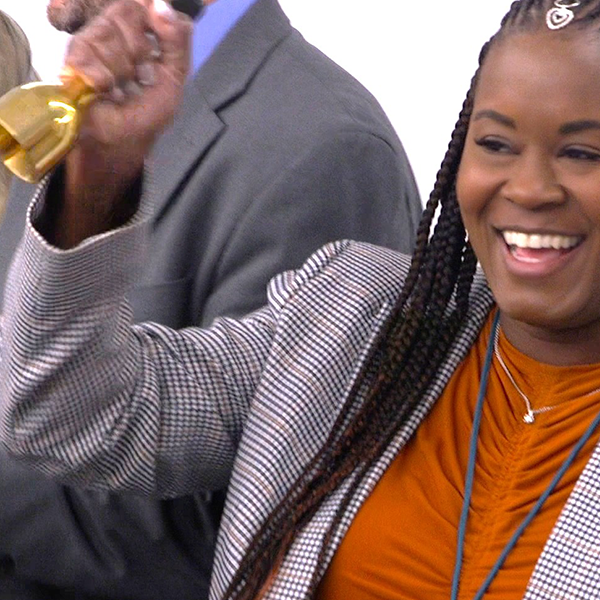-
Regeneration after rare head and neck cancer
Alison O'Neill's love for life is as infectious as her grateful attitude.
"I've been blessed beyond measure. I absolutely love and appreciate life to the fullest. We (my husband and I) love to golf, play tennis, work out, hike and travel," says Alison.
With a bright outlook and a healthy lifestyle, Alison never expected that a small blemish on her right cheek would trigger a big change in her life — a twist of fate that would lead her on the path to regenerative biotherapeutics.
"They thought it was a clogged oil gland. They kept thinking it was nothing to be concerned with," says Alison. "I watched it for over 3½ years. Then I made the personal decision to have it biopsied."
The initial biopsy performed outside Mayo Clinic determined it was nonaggressive cancer with a low risk of spreading.
When Alison came to Mayo Clinic to have it removed, her care team called for a second biopsy. The result was grim: angiosarcoma, a rare, life-threatening cancer of the blood vessels.
"The diagnosis of angiosarcoma was devastating. Everything changes in literally a phone call," says Alison.
"Only a handful of pathologists are specialized in diagnosing this tumor when they see it. Thankfully, we have one of the world's experts at Mayo Clinic," says Brittany E. Howard, M.D., a head and neck surgeon and facial reconstruction expert at Mayo Clinic.
Dr. Howard suggested they act quickly to improve the chances of survival, and Alison agreed.
"These tumors can be so dangerous. We took off the size of the baseball off her right cheek in terms of diameter. For depth, we had to remove tissue all the way down to the facial muscles," says Dr. Howard.
"She had me put a glove on my hand and put the tumor in my hand. And I forgave it and said goodbye," says Alison.
Closing the wound required more than 100 stiches with skin transferred from remaining areas of the face, neck and collarbone to rebuild her cheek.
Regenerative road to recovery
Dr. Howard then recommended a regenerative medicine approach to healing after surgery.
Regenerative medicine is an emerging area of practice that is shifting the focus of health care from treating disease to restoring health by replacing or restoring diseased tissues, cells and organs. Mayo Clinic's Center for Regenerative Biotherapeutics is at the forefront of this movement and supports Dr. Howard's work.
Months of radiation after surgery left Alison with a lot of stiffness and pain. The care plan called for restoring skin flexibility with drug injections and rejuvenating the fullness with hyaluronic acid fillers as a first step toward rebuilding the tissue. To address radiation skin damage, Dr. Howard suggested a broadband light laser therapy to regenerate the skin. With this therapy, tiny pulses of light are aimed at the dark and red spots left from cancer treatment.

"What my body has done in terms of healing is amazing. Regenerative options are offering us a way to march forward with our head held high and looking the best we can."
-Alison O'Neill (pictured with husband, Daniel)
"It may help neutralize some deep pink and redness issues. We believe it truly restores some of the skin functionality back to what it was before radiation," says Dr. Howard. "Broadband laser therapy appears to reset the cells to a younger state, when they're expressing younger genes and younger proteins."
Through it all, Alison is determined not to become an unfortunate statistic of angiosarcoma.
"You're just taking it literally hour by hour and day by day. I've been given the opportunity to continue my life, and this is what I have to do to live longer," says Alison. "What my body has done in terms of healing is amazing. For those of us that have gone through really tough head and neck cancers, these regenerative options are offering us a way to march forward with our head held high and looking the best that we can."
Alison's care team is also evaluating the possibility of using fat grafting as a next step for rebuilding the right side of her face. To minimize risk, she must be cancer-free for at least two years. Fat grafting is a transfer of adipose tissue with stem cells and growth factors to regenerate fullness.
Research has documented that adipose tissue is brimming with mesenchymal stem cells that promote healing and stromal vascular fraction cells that reduce inflammation, replace damaged cells and trigger tissue regeneration. Both types of stem cells have been well-studied and found to be safe.
Dr. Howard and her team at Mayo Clinic in Arizona are preparing to begin research into new 3D bioprinting and tissue engineering procedures for restoring facial features after cancer.
In the meantime, Dr. Howard says laser therapy, hyaluronic acid, Botox and fat grafting are possible therapies for radiation damage from many cancers besides angiosarcoma. Often the treatments are covered by insurance, but it depends on the plan. Each patient should check for coverage.
###









